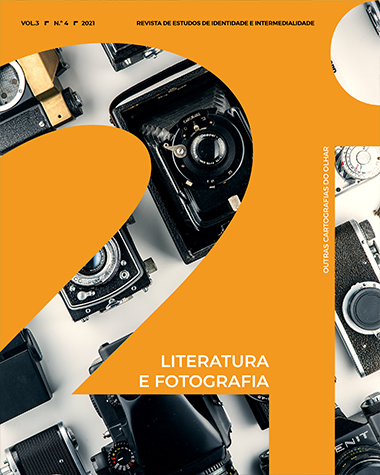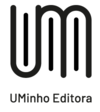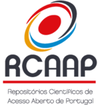Tiempo y posfotografía
Una investigación 'pratice-led' acerca de la duración
DOI:
https://doi.org/10.21814/2i.3434Palavras-chave:
Duración, Postfotografía, Investigación dirigida por la práctica, Tiempo, DuregraphResumo
Este artículo presenta un proyecto de investigación practice-led (guiado por la práctica) que indaga acerca de cómo se puede percibir el tiempo experimentado a través de imágenes fotográficas manipuladas. La investigación se realiza mediante una serie de imágenes digitales, cuyo contenido se renegocia en el tiempo, mientras el sujeto de la fotografía permanece dentro del encuadre. La obra de arte evidencia un espacio inestable entre una composición fotográfica y una imagen en movimiento empleada para cuestionar las convenciones de poder en la visualización y ampliar la forma en que podemos concebir el tiempo como en las imágenes fotográficas digitales. Este trabajo contribuye al discurso sobre metodologías practice-led en el campo de la práctica como una forma de investigación a través de un comentario acerca de la práctica del diseño.
Downloads
Referências
Baker, G. (2005). Photography's expanded field. October, 120–140.
Barthes, R. (1977). The photographic message. In (Ed.). Image Music Text. London: Fontana Press, 15–31.
_____ (1981). Camera lucida: Reflections on photography. Macmillan.
Bazin, A. and Gray, H. (1960). The ontology of the photographic image. Film Quarterly, 13 (4), 4–9.
Benjamin, W. (2006). The work of art in the age of mechanical reproduction. In J. Morra y M. Smith (Eds.). Visual Culture: Experiences in Visual Culture: Routledge, 4, 114–137.
Berger, J. (1972). Ways of seeing. London: Penguin Books.
_____ (2003). Drawn to that moment. In G. Dyer (Ed.), John Berger: selected essays (pp. 419–423). United States of America: Pantheon Books.
Bergson, H. (1957). Time and free will. Edinburgh: George Allen & Unwin LTD.
Brubaker, D. (1993). Andre Bazin on automatically made images. The Journal of Aesthetics and Art Criticism, 51(1), 59–67.
Candy, L. (2006). Practice based research: A guide. CCS report, 1(2).
Fredericks, D. C. (1993). Coping with transience: Ecclesiastes on brevity in life. Sheffield, England: JSOT Press.
Hamilton, J., & Jaaniste, L. (2010). A connective model for the practice-led research exegesis: An analysis of content and structure. Journal of Writing in Creative Practice, 3(1), 31–44.
Hunt, R. and McDaniel, M. (1993). The enigma of organization and distinctiveness. Journal of Memory and Language, 32(4), 421–445.
Husserl, E. (1964). The Phenomenology of internal time-consciousness. Indiana University Press.
Jarret, C. (2019). Why meeting another’s gaze is so powerful. Disponible en: https://www.bbc.com/future/article/20190108-why-meeting-anothers-gaze-is-so-powerful.
Kesner, L., Grygarová, D., Fajnerová, I., Lukavský, J., Nekovářová, T., Tintěra, J., & Horáček, J. (2018). Perception of direct vs. averted gaze in portrait paintings: An fMRI and eye-tracking study. Brain and cognition, 125, 88–99.
Mortensen Steagall, M. (2019). The process of immersive photography: Beyond the cognitive and the physical (Doctoral dissertation, Auckland University of Technology).
Mulvey, L. (1975). Visual pleasure and narrative cinema. Screen, 16(3), p. 6–18.
Nassar, I. (2007). On photographs and returning the gaze. Journal of Palastine Studies 31, 3–5.
Ritchin, F. (2010). After Photography. W. W. Norton & Company.
Rorty, Richard (1982). Consequences of pragmatism (essays 1972–1980). Minneapolis: University of Minnesota Press.
Rowse, D. (2020). Where is Your Subject Looking and Why Does it Matter?, n.d. Disponible en: https://digital-photography-school.com/where-is-your-subject-looking-and-why-does-it-matter/
Sartre, J.-P. (1956). Being and nothingness. Philosophical Library.
Sontag, S. (1977). On Photography. United States of America: Farrar, Straus and Giroux.
Steagall, M. M. & Ings, W. (2018). Pesquisa de doutorado practice-led e a natureza dos métodos imersivos. DAT Journal, 3(2), 392–423.
Downloads
Publicado
Como Citar
Edição
Secção
Licença
Direitos de Autor (c) 2021 David van Vliet, Marcos Mortensen Steagall

Este trabalho encontra-se publicado com a Creative Commons Atribuição-NãoComercial 4.0.


.jpg)










